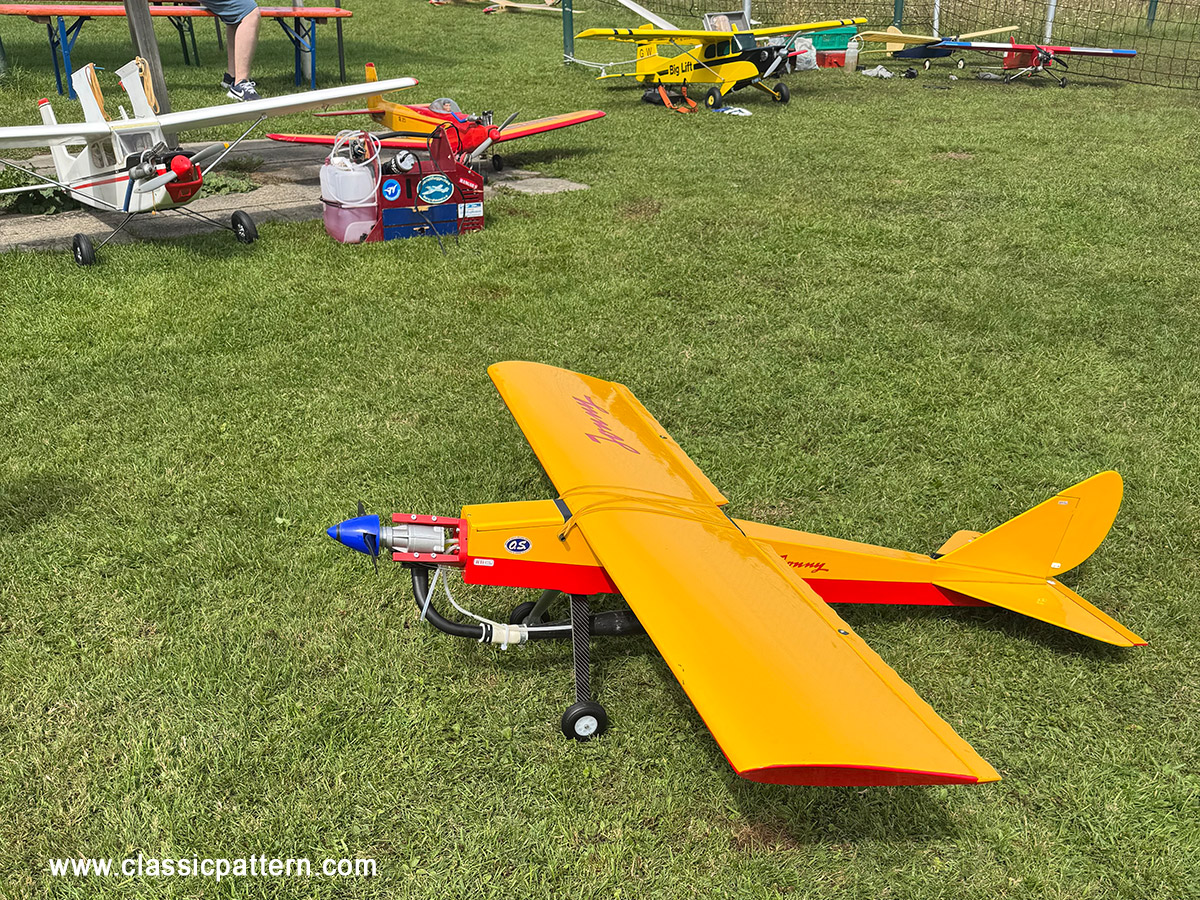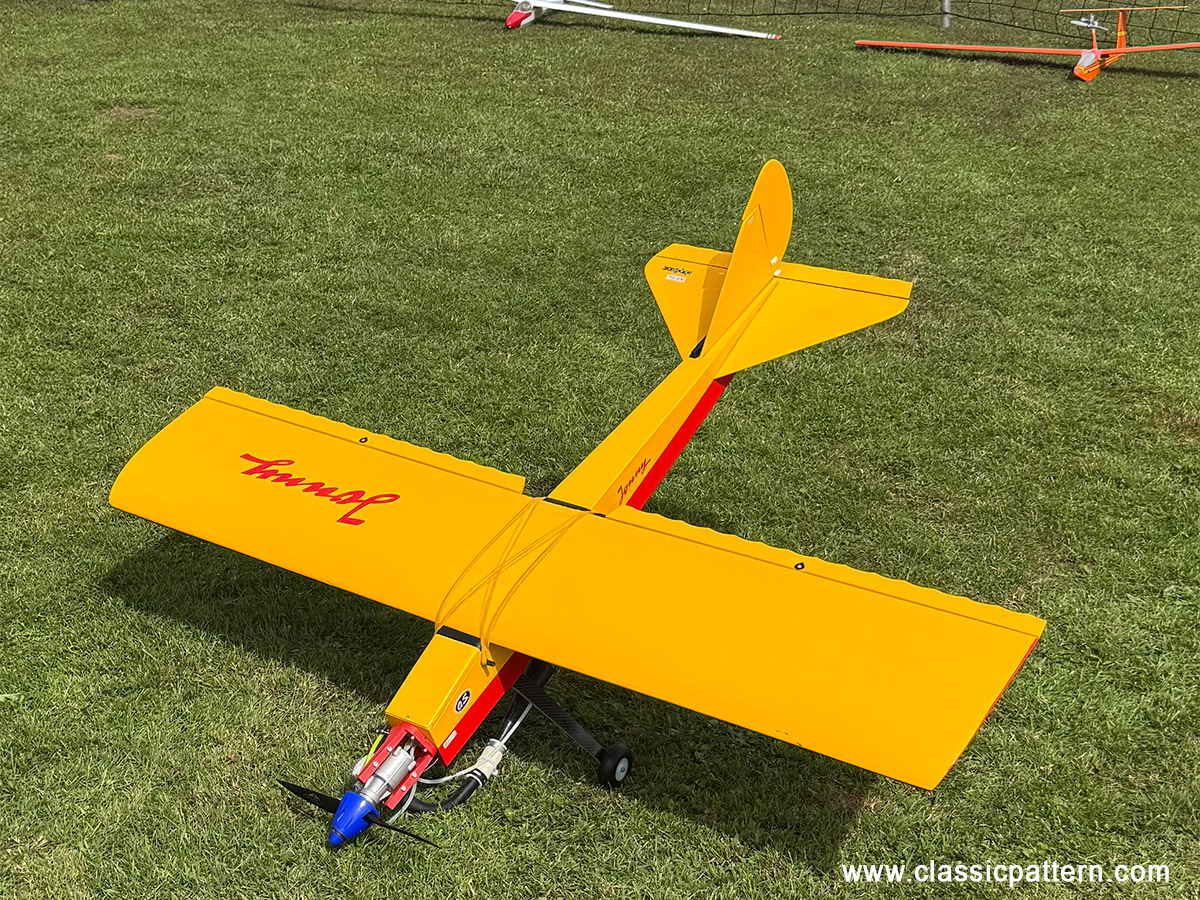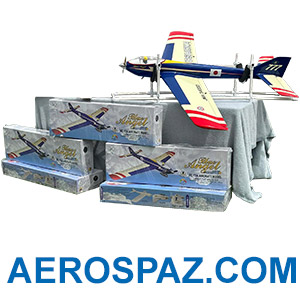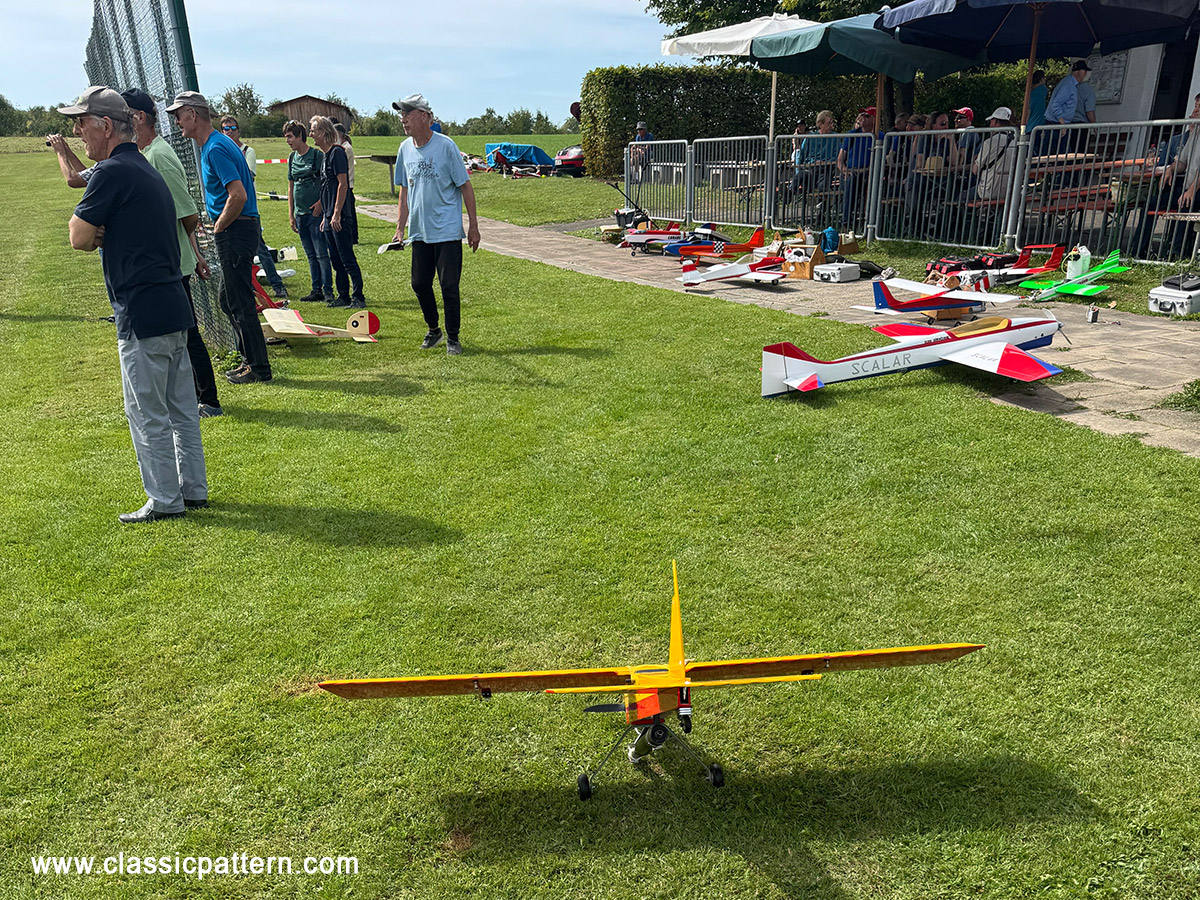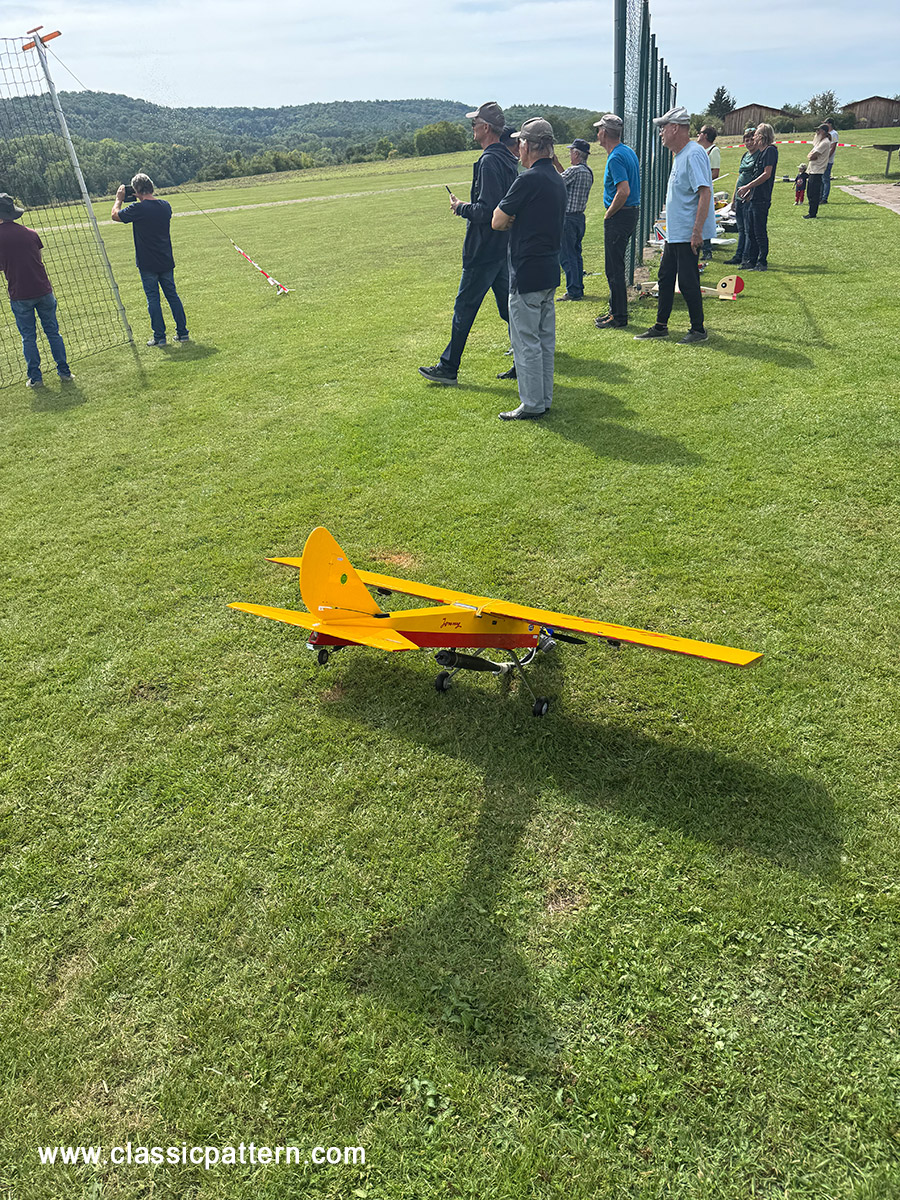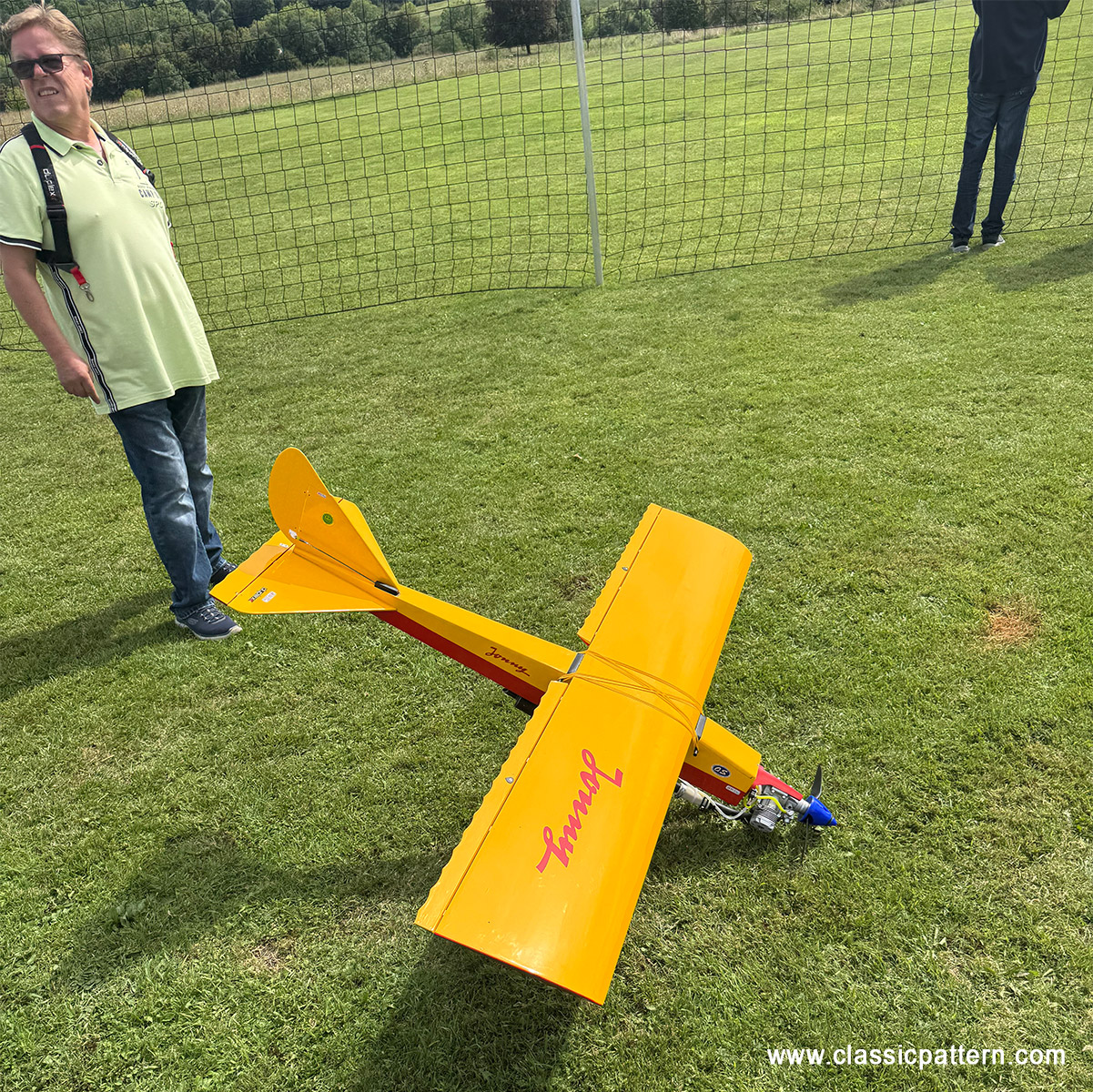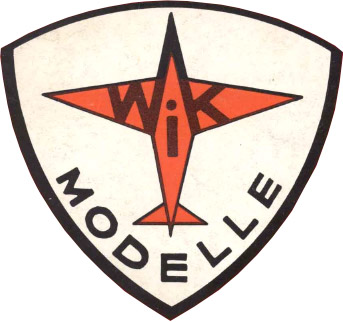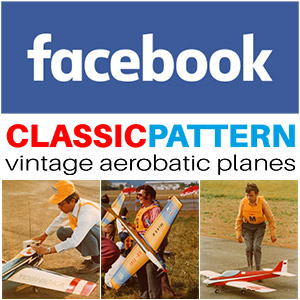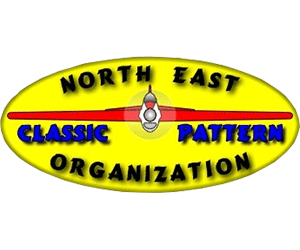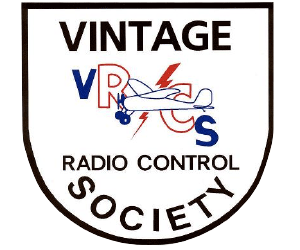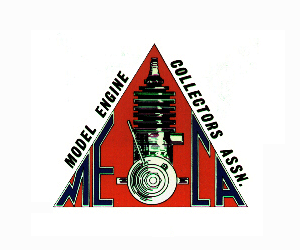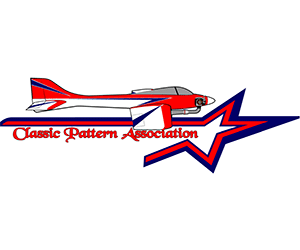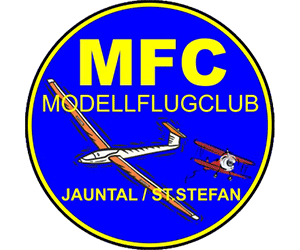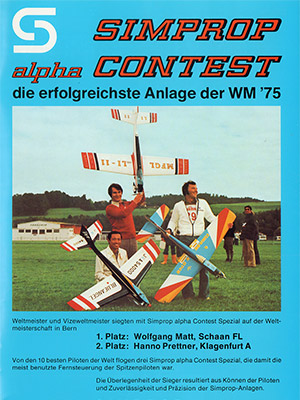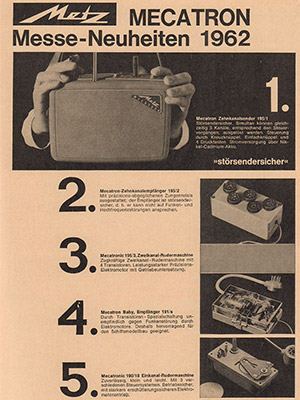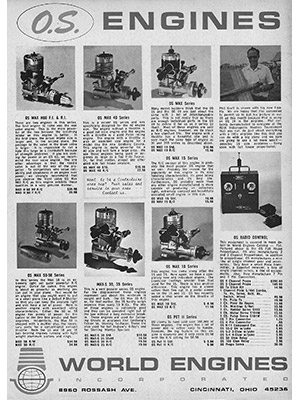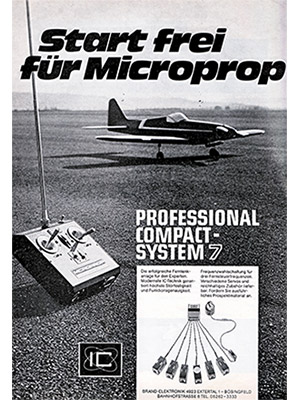I got a taste of model flying at the age of 14. After receiving my confirmation money, I was able to afford a brand new Multiplex Royal, which I did. A Graupner Dandy and a Floride were waiting to be used. Then I was allowed to go for a trial flight.
My future club, the FMSC Reutlingen, did not yet have its own site in Reutlingen, but the few pilots flew on the Bundeswehr site on the Haid (Located on the Swabian Alb between Reutlingen and Sigmaringen).
At that time there were some who flew a Jonny. What an aeroplane…
That was my first contact with the ‘Jonny’…
It’s 2025, the FMSC, proud owner of the airfield on the Panzergelände in Reutlingen – Ohmenhausen for 55 years, is organising this year’s Retro Süd Meeting.
Naturally, as the editor of Classicpattern, it was a must for me to attend the event.
I couldn’t believe my eyes – there was a beautiful ‘Jonny’! Built by Reutlingen club member Andreas Häßler. What a sight. It absolutely has to be on Classicpattern.
Here are my photos and an article from 1965 by F.H. Leisten.
Here is the report:
Since September 1968 the last new release of the company Ing. W. Klinger, Knittlingen, is available as a kit in specialised shops. On the occasion of the R/C-1 competition for the “Käthchen-Pokal” in Heilbronn, I was able to observe the “JONNY”, which was still a prototype, in flight. Since Mr. Klinger flew the model himself, and I was very impressed that such a model, designed to look “old”, could inspire the public, especially model pilots, it was actually quite obvious that I wanted to take a closer look at this construction. So I was delighted when I received a “JONNY” kit straight from the packing table as soon as the first series of kits was launched.

With the obligatory curiosity about new releases, the contents of the box were immediately inspected. It must be said here that the quality of the kit is in no way inferior to American imported kits. In addition to the appropriately selected wood quality and the well pre-machined parts – here it must be particularly emphasised that the punched ribs have extremely clean contours thanks to a “new” punching process – the kit also contains the necessary accessories such as engine flange mountings, rudder hinges and rudder levers for ailerons, elevators and rudders as well as pre-bent 4 mm steel wire rods for the intended bipod landing gear.
As far as the construction of the model is concerned, one can justifiably speak of a simple construction method. It therefore seems superfluous for me to go into detail here about the well-known box hull construction method. I would strongly advise anyone who nevertheless finds the lightweight fuselage construction, which is only to be welcomed, to leave out any “additional reinforcement”, as the model is also designed for tough training manoeuvres!
Individual motor mounting: either upright, horizontal or suspended by means of flange mounting. Here advantageously mounted horizontally, exhaust downwards!
As this is a motorised model and there is no question of weight as with gliders, I covered my model with the WIK nylon covering fabric, although for time reasons this was only done on the wings, and the fuselage and tailplane were covered with Japanese paper during the wood priming process.
The colour design of such models is extremely variable due to the vintage shape. So I decided to apply German national emblems from the past, whereby white is a suitable base colour, because it is a kit model “Made in Germany”.
See photos! I made the necessary emblems from WIK decal film no. 3430/black, which firstly saves time and secondly guarantees good and perfect contours.
Before we talk about the flying experience, a few technical details should be of interest. On the “JONNY”, the motor is attached to a 6 mm thick birch plywood bulkhead using the flange mounting system that is gradually gaining in popularity. The two required Dural square flanges are already included in the kit as accessories. These flanges are already provided with four 3.2 mm holes for screwing to the bulkhead. All that remains to be done is to drill four holes in a flange part according to the motor type used and the motor can be mounted in the simplest way.
This direct connection from servo to control surface guarantees backlash-free control transmission, which is highly appreciated with ailerons. The “JONNY” can be fitted with either a three-legged undercarriage or the more stylish two-legged undercarriage with spur. As I wanted to try out the take-off capabilities of a two-legged undercarriage on grassy terrain, but on the other hand I like the two-legged version with spur better, this type was chosen. The large wheels (90 mm) in no way detract from the appearance of the model, but rather have the opposite effect and are also useful. Once the model was ready to fly, my curiosity about the flight behaviour increased considerably. After about 10 metres of taxiing, it took off and entered a very steep climb.
However, I had expected this reaction because I had applied a little elevator from the start due to the bipod undercarriage, so that the aircraft first had to keep the tail well on the ground to prevent it from tipping forwards on the bumpy grass. During this first flight I was able to see for myself what the brochure says: Due to the low wing loading, the “JONNY” model has particularly good-natured flight characteristics! I can only confirm this from practical experience. However, it must be said here that the model is not intended for beginners who want to fly their very first R/C model. It goes without saying that this is a multi-axis model which, in my opinion, represents an R/C multi-axis trainer due to its good and simple structural and aerodynamic design principles, which gives advanced model pilots the opportunity to work their way up to the R/C-1 flight programme in terms of flight and control techniques.
With the Jonny, it is possible to initially fly in the manner of a simple R/C model with a slightly higher EWD, around 1.5 °, and a corresponding motor, and thus gain the necessary experience to then later trim for aerobatics. I now fly with an EWD of 0°, after I have reworked the wing saddle a little and changed the EWD from approx. 0.750, as shown in the construction plan. If the engine stops in flight, there is no need to be nervous! You will very quickly adjust to the gliding flight and will normally always be able to land the model safely. I have also noticed that the glide angle is noticeably flatter when the motor is switched off, i.e. when the bar is stationary, than when flying with the motor throttled back.
Not to be underestimated are the outstanding characteristics in stalled flight. You can let the model hover in very slowly during the landing approach, and it almost has to “stand” in the air even when there is no wind before it tips over a surface. I have tried this condition several times at sufficient altitude so that I knew exactly what to do for my landings on uneven grass. After some training, I was able to set up the “JONNY” with bipod undercarriage using three-point landings in such a way that the model no longer tipped over forwards, which is less critical with tripod undercarriage.
Apart from that, I fly all the manoeuvres with the model that you can fly with ailerons and elevator without rudder: Looping backwards and forwards, also slow rolls, lying and standing figure eights; up and down turns and of course inverted flight. It goes without saying that you can also fly other figures, such as angular loops or the hat. So what you can fly with the “JONNY” depends more on the pilot’s experience. Despite the relatively small dihedral, it is also possible to fly the “JONNY” with only rudder, elevator and motor throttle and thus dispense with ailerons. Personally, however, I am much more inclined to fly a model with ailerons and then do without a controllable rudder when using a three-function system. This is what I did with the “JONNY”, and thanks to this design it is then possible to practise an elegant and dynamic flight, which is only possible with ailerons. So I can summarise my test report by saying that I can recommend this model with a clear conscience to anyone who is interested.
Technical data:
R/C multi-axis trainer “JONNY”
Wingspan 1500 mm
Length 1200 mm
Surface area approx. 38 sqdm
HLW content approx. 8.5 sqdm
Flying weight as photo with SIMPROP Digi 2+1 and ST 46 2300 gr
EWD according to plan approx. 0.75°
Wing profile symmetrical at approx. 10 % thickness
EWD on the model in the photos 0°
dihedral 1.50
FH. Leisten



